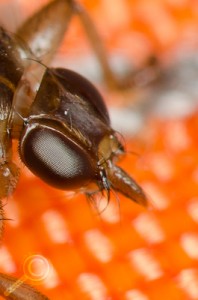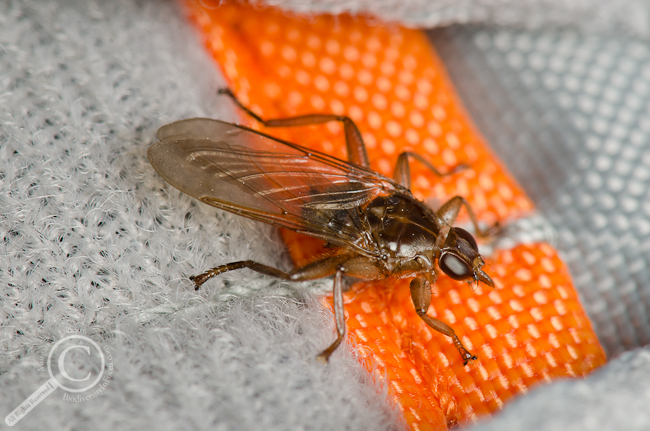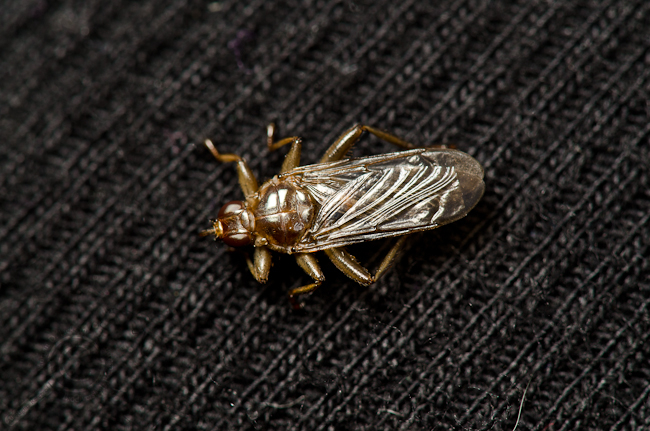Check out this video that Matthew Cobb of Why Evolution is True just found and posted. While it’s primarily showing a pair of swifts (Apus apus) being reunited after a 9 month hiatus in Africa, check out who crashes the party (most easily seen around the 1:10 mark).
That little scuttling thing playing peekaboo from the neck feathers of the male is actually an adult fly in the family Hippoboscidae, and most likely a male Crataerina pallida, the swift louse fly. These flies are ectoparasites of birds, where they bite and feed off the blood of both nestlings and adults.
Hippoboscids, like bat flies in the family Nycteribiidae (sometimes considered a subfamily of the Hippoboscidae) that Piotr Naskrecki has been showing off this week, give birth to live, late-stage maggots that the female has reared and nourished one at a time in her abdomen. The maggots are deposited into the swift’s nest, where they pupate and then scuttle onto their nestling host. According to Hutson (1981), fly populations peak in mid June when the swift nestlings are just beginning to hatch, and steadily fall off from there until most flies are dead by mid to late August, and he stated the flies do not make the migration with the birds.
But, since these flies don’t lay eggs, they must be spending the winters in the nest boxes as pupae, awaiting the return of their hosts year after year. Hutson found that males are more prevalent early in the spring, with females to follow. This leads us to an interesting question of how this louse fly got onto this bird! The fly was already aboard the bird when it entered the box (if you watch closely you can see a white blob that moves around neck is first visible at 0:06, immediately after the male bird approaches the sitting female). This means that one of two things happened: either the male bird has in fact carried its little parasite friend down to Africa and back (something that neither Hutson nor Walker & Rotherham (2010) believe to be the case) (and assuming this was the first nestbox that the bird stopped in, which I take to be the presumption of the ornithologists who posted the video and stated it shows a male reuniting with its mate from last year in last year’s nestbox), or alternatively, the male bird did stop for a time in another nestbox where it picked up its little hitchhiker, and then proceeded on to its longterm mate. This of course raises questions about how committed these birds really are to their mates, and whether they may be getting a little action on the side (or at least exploring their other options) before settling down for the season. Since I know pretty well nothing about bird biology, if someone knows more about swift mating, bonding, and extra-pair copulation, let me know in the comments if I’m way off.
Either way, catching a glimpse of a louse fly playing peekaboo on the neck of its host may raise more questions than the initial emotional response of “WHAT IS THAT THING?!?”, and that’s pretty darn cool.



